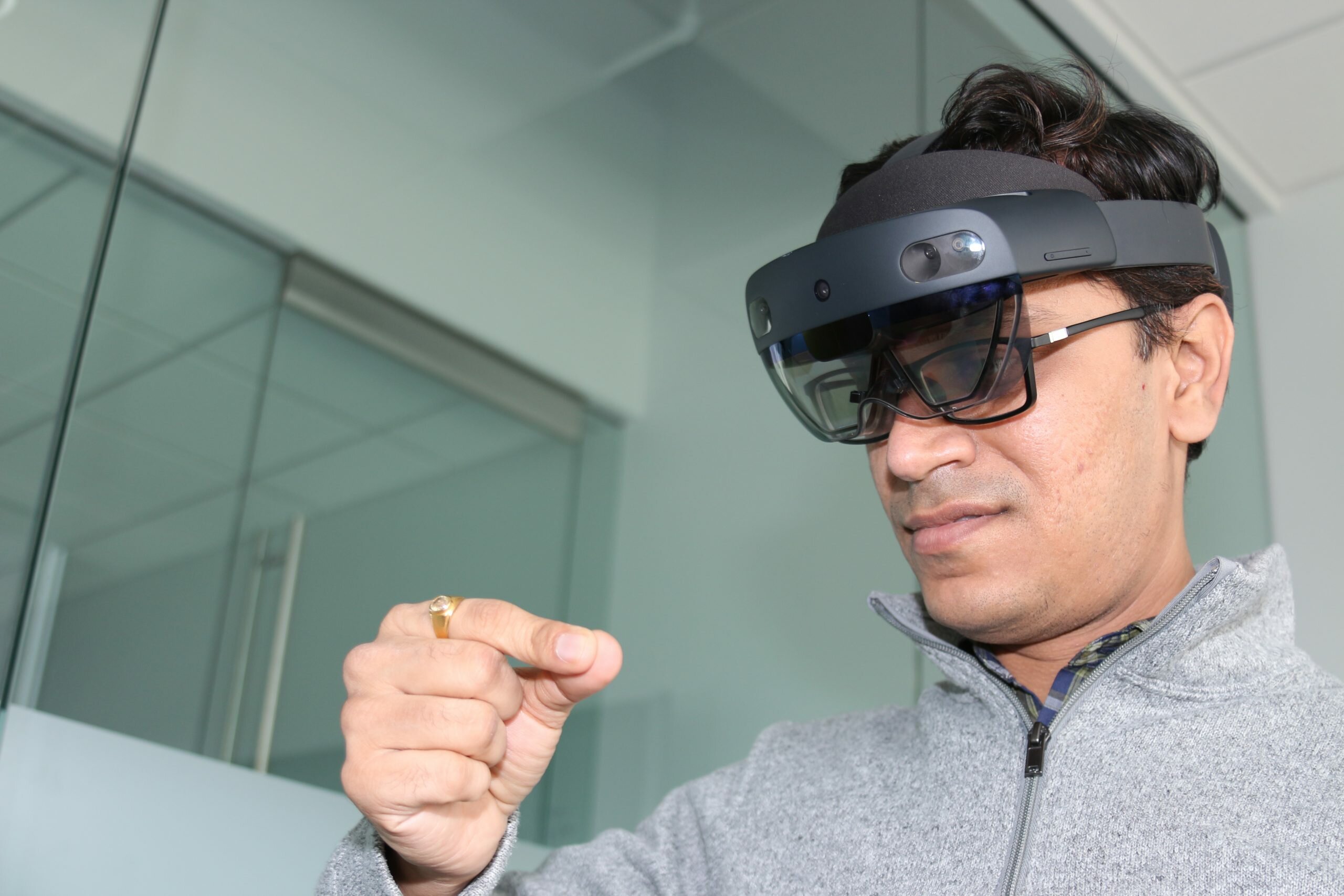Can you tell us a little about you?
I am Solution Designer and Innovation Evangelist of HCI technologies including Mixed and Augmented Reality. Having spend most of my career in solving problems around Digital transformation for Small to Mid size Enterprises; transition to immersive digital interface was but obvious path. My focus in recent years has been supporting businesses to not just drive internal innovation with Mixed Reality, but also explore ways as to how they can solve critical problems, digitize existing operations and enable the new age workforce with this immersive technology.
What was the inspiration for Mixed Reality?
Mixed reality is a blended interface of Augmented reality and virtual experience. Cool thing is that, it still provides capability for user to interact with digital content considering the depth of objects in the physical space. Possibilities that this technology provides with hands free experience; interactive visualizations, voice enablement, object recognition, depth sensing etc. and its potential to redefine the way user interacts with business systems, was the inspiration to adopt this practice.
Can you tell us more about your work in Mixed Reality?
My work in Mixed Reality practice involves Innovation, Technology consulting, Strategy and Roadmap building for business vertical including manufacturing, engineering, healthcare, Oil & Gas, etc. for areas including but not limited to field service, work procedure automation, Industrial workforce training, front line worker operations, data visualization, modernization of existing business systems by integration with Mixed Reality headsets and so forth.
Would you like to share your achievements in this field?
My achievements within mixed reality innovation include optimizing field service management cost of leading engineering company by digitizing service manual into MR interface, implementing MR based solution for automation of product configuration and quoting procedure of leading manufacturing company by transforming from legacy excel based systems, reducing manual training cost of industrial workforce by building simulated training experience in mixed reality and so forth. Achievements also include publication of research papers and review articles in prominent Journals and speaker on Industrial Mixed reality in leading conferences.
How do you see The Changes in Mixed Reality Industry?
Mixed Reality industry is seeing major transformation in last couple of years with entry of new players and launch of new devices. Another major change that is happening now is that software development tool kits (SDKs) are becoming device independent and having greater flexibility to integrate with wider range of content authoring tools.
What do you think will be the biggest trends in future?
Biggest trend in future would be Innovation in terms of edge intelligence within mixed reality devices i.e., reduction in usage of cloud for on demand cognitive services. It would empower the user and make him less dependent for need of internet / wifi connectivity while in the field or on the factory floor. Cloud players may not encourage this trend, however the industrial users would drive the need and it would push the players to develop such kind of capabilities in future.
Would you like to share a useful point for Mixed Reality Designers? What is next for Dhaval Sahija?
Mixed Reality engineers would have to come up with system design with ‘Minimalistic’ philosophy. Meaning minimum usage of computing while presenting different elements within User interface; minimum usage of cloud while fetching data from backend systems, minimum size of 3d models for rendering holograms, and so forth.
Linkedin Profile: https://www.linkedin.com/in/dhavalsahija/







